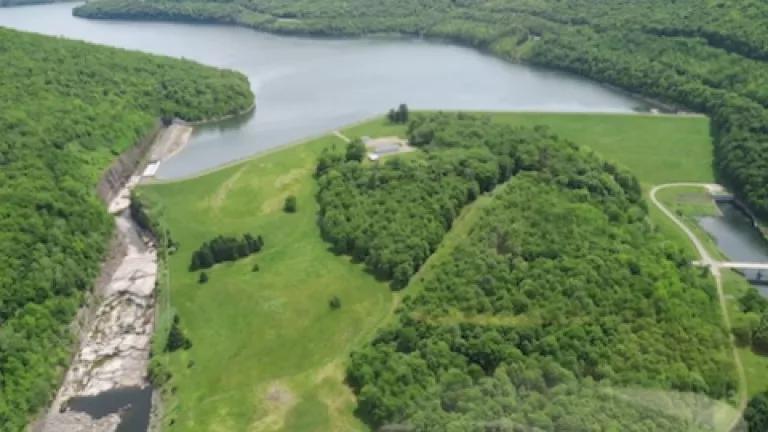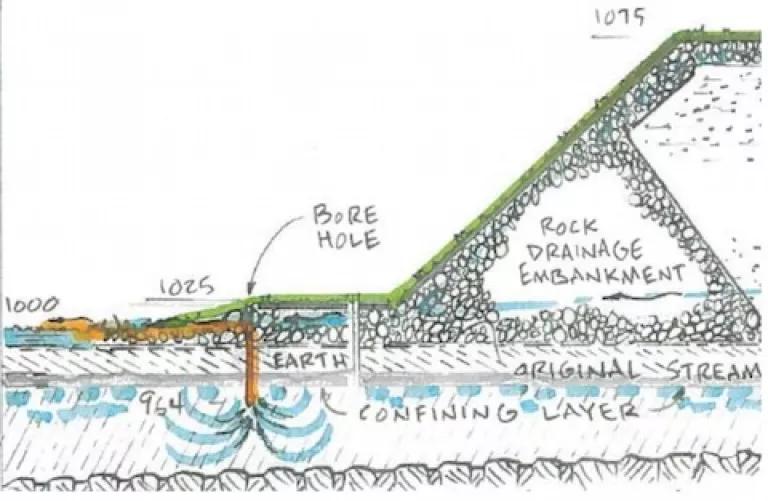
The New York City Department of Environmental Protection ("DEP") has begun draining the 95 billion gallon Cannonsville Reservoir in upstate Delaware County in a precautionary move aimed at protecting riverbank communities from the unlikely possibility of a dam breach that could lead to downstream flooding.
The action comes following the recent discovery by city workers that turbid water was being discharged from a rock embankment just below the Cannonsville dam.
New York City officials have begun draining the 95 billion gallon Cannonsville Reservoir, pictured above. Recent construction activities at the dam's embankment have led the agency to begin emergency repairs and alert downstream communities.
City engineers believe that the turbid water, which is entering the lower West Branch of the Delaware River, is coming from an artesian aquifer that was pierced by contractors who had initiated soil boring just below the dam in connection with the construction of a new hydroelectric generating facility, which is to be located at that site.
On their website, City DEP officials stress that there is no "imminent threat to the safety of the dam" and that DEP is draining the reservoir "out of an abundance of caution and [to] prioritize public safety while the repairs are made."
DEP engineers and contractors are actively monitoring the site and have designed a repair program that is intended plug the bore hole and ensure that the embankment is fully stabilized.
The Cannonsville is one of six giant, West-of-Hudson River reservoirs that ordinarily provide 90 per cent of New York's downstate water supply.
Yesterday, the DEP officials drew down about one billion gallons of water from the reservoir, funneling it into the city's Delaware water supply system or releasing it into the lower Delaware River.
In other precautionary measures, DEP has brought sand, gravel and earth-moving equipment into position, in the event that the embankment below the dam becomes unstable.
The turbid water release was discovered on July 8th, after which the soil boring activities associated with the future hydroelectric facility immediately ceased.

New York City officials suspect that recent construction activities at the Cannonsville Reservoir Dam led to the piercing of an artesian aquifer, pictured above, just below the dam site. While officials believe that there is no imminent threat to public safety, communities along the Lower West branch of the Delaware River should be closely monitoring the situation.
Last week, City DEP officials began a series of ongoing meetings with downstream communities to alert them of the situation and provide them with information, including flood inundation maps and plans. These steps are being taken, according to the city, so that local officials would be better prepared in the unlikely event that the current situation were to result in a breach in the dam.
The risk from the current situation is hopefully small and City DEP officials seem to be on top of the situation.
But the consequences of a significant dam breach could be enormous both in terms of public safety and property damage to downstream communities in both New York and Pennsylvania.
When officials start talking about emergency evacuation plans and flood inundation maps, it's time for downstream communities to take notice.

